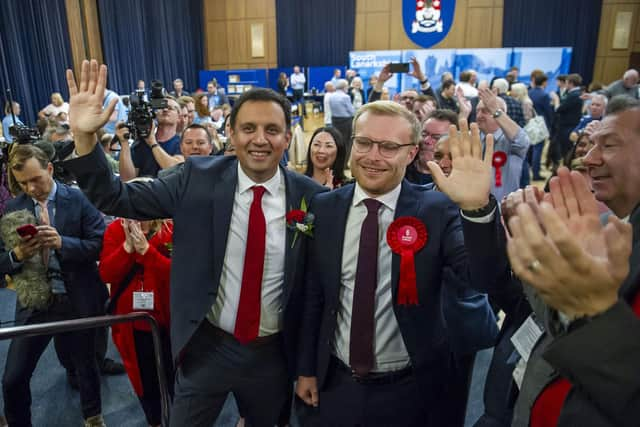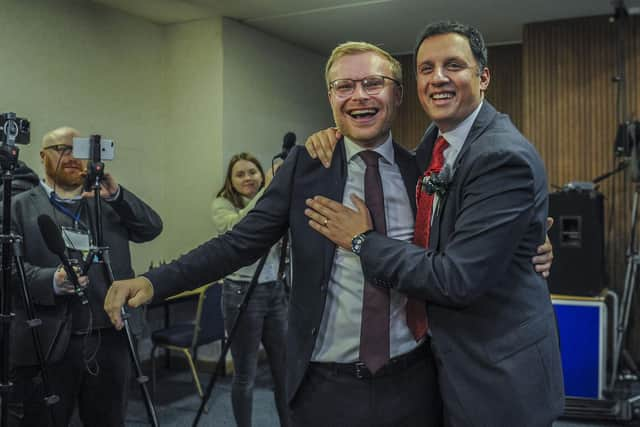Rutherglen and Hamilton West by-election: What have we learned?
Labour has won the Rutherglen and Hamilton West by-election with a massive swing of 20.4 per cent.
Michael Shanks is now the constituency’s new MP after winning 17,845 votes, 58.6 per cent of the entire vote.
Advertisement
Hide AdAdvertisement
Hide AdBut what exactly does this win mean as the clock starts ticking on next year’s general election?


We take a look at five things we’ve learned on the back of Labour’s massive election win.
Labour can win again in Scotland
Michael Shanks’s victory doubles the number of Labour MPs in Scotland from one to two.
It is still small numbers compared to the 41 seats they won in the 2010 general election - but it shows that Labour are back to their winning ways north of the border.


And this could help give Sir Keir Starmer the keys to Number 10.
One of the ways Labour can win the next general election is by taking seats off of the SNP here in Scotland, and this by-election win shows they have the ability to do this.
Scottish Labour leader Anas Sarwar said: “Scottish Labour is now the party of change and tonight demonstrates Scotland will lead the way in delivering a Labour government.”
At least Ian Murray MP will have a fellow Scot to keep him company on the Labour benches now.


Humza Yousaf has some work to do
Advertisement
Hide AdAdvertisement
Hide AdThis is the first election test for Humza Yousaf since he became SNP leader and the First Minister.
His predecessor Nicola Sturgeon was lauded for her ability to win election after election during her eight years in power, so the pressure was on Mr Yousaf to see if he could replicate that.
Turns out, he can’t.


In 2019 the SNP only won this seat by a small margin of just 5,200 votes, and there had always been a strong Labour base in the constituency.
Their candidate Katy Loudon won 8,399 votes on the night.
But the SNP will now have to go back to the drawing board and come up with a new election tactic after suffering such a thumping defeat in this election, as they can no longer rely on support in traditionally held Labour areas of Scotland.
The party’s deputy leader Keith Brown said the SNP now needs to work hard to rebuild people’s trust and Humza Yousaf said it was a “disappointing night for the SNP”.
The Conservative base has collapsed in Scotland
This by-election was always billed as a straight fight between the SNP and Labour, so the Conservatives were always going to come third.


But their candidate Thomas Kerr only managed to rack up 1,192 votes, a pretty dismal performance.
Polls suggest the Conservative vote across the whole of the UK is going to dip after the partygate scandal and Liz Truss’s mini budget - if this by-election is anything to go by, it could be a humiliating defeat for them in Scotland.
Parties question the impact of voter ID in Scotland
Advertisement
Hide AdAdvertisement
Hide AdThe voter turnout was 37.19 per cent - a total of 30,531 out of a possible 82,104 people turned out to vote in this election.
This was the first time voters in Scotland needed to show photographic ID before they could cast their votes.
Pollster Mark Diffley said parties should be “asking serious questions about the use of resources, not the mention the state of democracy” on the back of the low turnout figures.
Scottish Green candidate Cameron Eadie, who earlier in the day accused the Conservatives of suppressing votes with voter ID legislation, later said he had seen people being turned away from polling stations because they had no ID on them.
We would often expect turnout in a by-election to be lower than in a general election, but this is far below the 53,919 who cast votes in this seat in 2019 when there was no voter ID legislation.
Comments
Want to join the conversation? Please or to comment on this article.